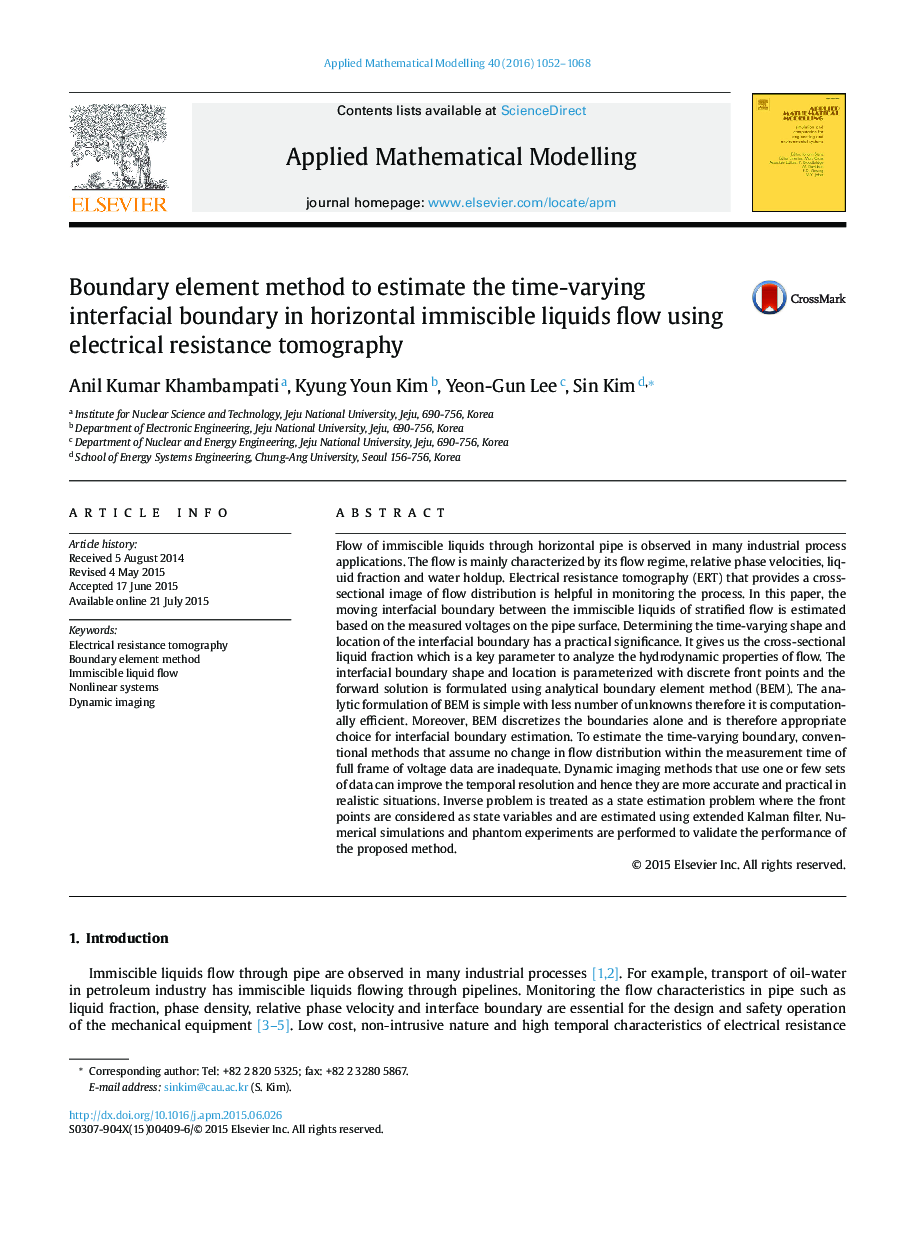| کد مقاله | کد نشریه | سال انتشار | مقاله انگلیسی | نسخه تمام متن |
|---|---|---|---|---|
| 1702748 | 1012354 | 2016 | 17 صفحه PDF | دانلود رایگان |
عنوان انگلیسی مقاله ISI
Boundary element method to estimate the time-varying interfacial boundary in horizontal immiscible liquids flow using electrical resistance tomography
ترجمه فارسی عنوان
روش عنصر مرزی برای برآورد مرز بین فواصل زمانی متغیر در جریان مایعات افقی قابل انطباق با استفاده از توموگرافی مقاومت الکتریکی
دانلود مقاله + سفارش ترجمه
دانلود مقاله ISI انگلیسی
رایگان برای ایرانیان
کلمات کلیدی
توموگرافی مقاومت الکتریکی، روش عنصر مرزی، جریان مایع غیر قابل تحمل سیستم های غیر خطی، تصویربرداری پویا،
موضوعات مرتبط
مهندسی و علوم پایه
سایر رشته های مهندسی
مکانیک محاسباتی
چکیده انگلیسی
Flow of immiscible liquids through horizontal pipe is observed in many industrial process applications. The flow is mainly characterized by its flow regime, relative phase velocities, liquid fraction and water holdup. Electrical resistance tomography (ERT) that provides a cross-sectional image of flow distribution is helpful in monitoring the process. In this paper, the moving interfacial boundary between the immiscible liquids of stratified flow is estimated based on the measured voltages on the pipe surface. Determining the time-varying shape and location of the interfacial boundary has a practical significance. It gives us the cross-sectional liquid fraction which is a key parameter to analyze the hydrodynamic properties of flow. The interfacial boundary shape and location is parameterized with discrete front points and the forward solution is formulated using analytical boundary element method (BEM). The analytic formulation of BEM is simple with less number of unknowns therefore it is computationally efficient. Moreover, BEM discretizes the boundaries alone and is therefore appropriate choice for interfacial boundary estimation. To estimate the time-varying boundary, conventional methods that assume no change in flow distribution within the measurement time of full frame of voltage data are inadequate. Dynamic imaging methods that use one or few sets of data can improve the temporal resolution and hence they are more accurate and practical in realistic situations. Inverse problem is treated as a state estimation problem where the front points are considered as state variables and are estimated using extended Kalman filter. Numerical simulations and phantom experiments are performed to validate the performance of the proposed method.
ناشر
Database: Elsevier - ScienceDirect (ساینس دایرکت)
Journal: Applied Mathematical Modelling - Volume 40, Issue 2, 15 January 2016, Pages 1052-1068
Journal: Applied Mathematical Modelling - Volume 40, Issue 2, 15 January 2016, Pages 1052-1068
نویسندگان
Anil Kumar Khambampati, Kyung Youn Kim, Yeon-Gun Lee, Sin Kim,
